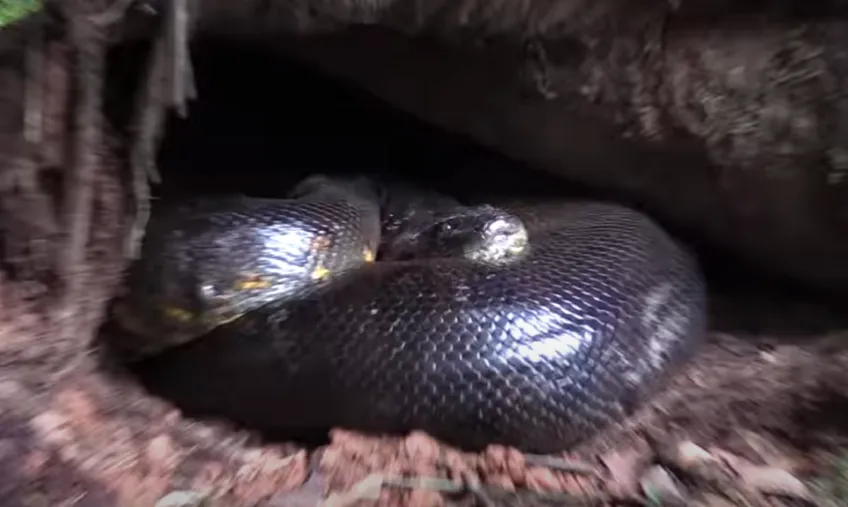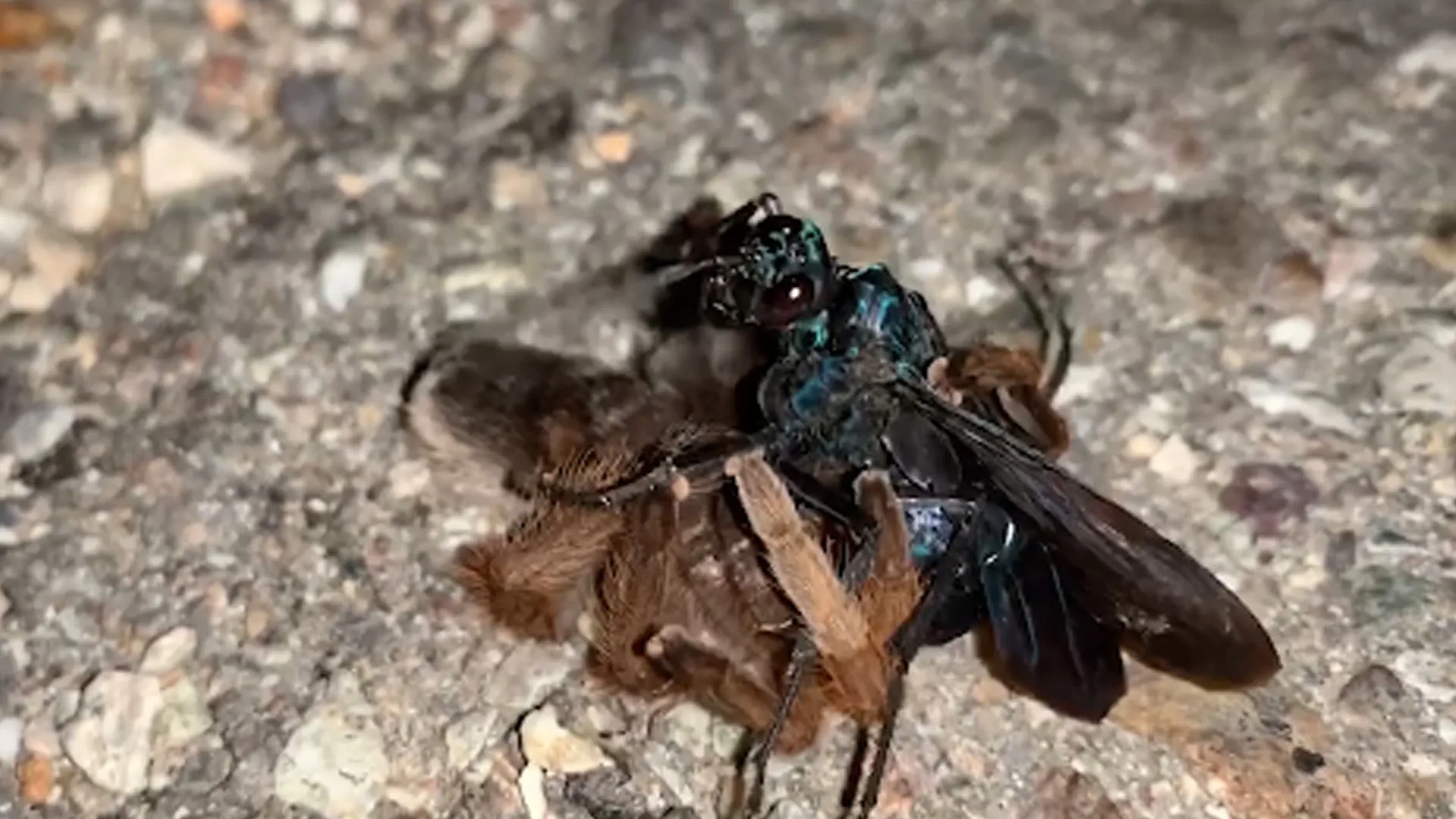Tarantula vs Anaconda The Epic Showdown
The animal kingdom presents many fascinating rivalries, but few are as intriguing as the potential showdown between a massive anaconda and a formidable tarantula. While a direct confrontation is rare, the contrasting sizes, habitats, and hunting strategies of these creatures offer a captivating glimpse into the dynamics of survival. This article explores the key facts and comparisons between the Anaconda and the Tarantula. The Anaconda, a giant constrictor snake, and the Tarantula, a large, hairy spider, inhabit vastly different environments and possess unique adaptations that allow them to thrive in their respective ecosystems. This analysis unveils the fundamental differences and similarities between these creatures, considering their physical attributes, hunting styles, and ecological roles.
Anaconda Overview
The anaconda, scientifically known as Eunectes, is a non-venomous boa species found in the tropical wetlands of South America. Famous for their impressive size, anacondas are among the largest snakes in the world, with some individuals reaching lengths exceeding 20 feet and weights over 200 pounds. These aquatic reptiles are perfectly adapted to life in and around water, possessing eyes and nostrils positioned on the top of their heads, enabling them to remain submerged while still keeping watch for prey and predators. The anaconda’s olive-green skin, often marked with black or brown blotches, provides excellent camouflage amidst the dense vegetation of their habitat, allowing them to ambush unsuspecting animals.
Anaconda Physical Characteristics

The physical characteristics of the anaconda contribute significantly to its predatory prowess. Their powerful, muscular bodies are designed for constriction, allowing them to squeeze their prey until they suffocate. The anaconda’s scales are smooth, aiding in their movement through water and vegetation. Their jaws are flexible, enabling them to swallow large animals whole. The placement of their eyes and nostrils on the top of their heads is another critical adaptation, allowing them to remain submerged while hunting or observing their surroundings. Anacondas also have heat-sensing pits along their jaws, which help them detect the presence of warm-blooded prey, even in low-light conditions. Their sheer size and robust build make them formidable predators in their environment.
Anaconda Habitat and Distribution
Anacondas primarily inhabit the wetlands and slow-moving rivers of South America, including countries like Brazil, Colombia, Venezuela, and Peru. They thrive in environments rich in aquatic vegetation, such as swamps, marshes, and flooded forests. These areas provide both shelter and an abundance of prey. Anacondas are excellent swimmers and spend much of their time in the water, where they can ambush prey or escape from predators. They are also known to bask in the sun on riverbanks or amongst the vegetation to regulate their body temperature. Their distribution is limited to tropical and subtropical regions, where the climate and habitat conditions are ideal for their survival.
Anaconda Diet and Hunting Strategies
As apex predators, anacondas have a diverse diet, including fish, birds, caimans, capybaras, and even larger mammals. Their hunting strategy involves ambushing their prey. They often lie in wait, concealed in the water or along the riverbanks, and strike when an unsuspecting animal comes within reach. Once they have seized their prey, they wrap their powerful bodies around it, constricting it until it suffocates. They then swallow the entire animal whole, a process that can take several hours depending on the size of the prey. Their slow metabolism enables them to survive for extended periods without food, but they require a large meal to sustain their massive size and energy demands. The hunting methods employed by anacondas make them one of the most efficient predators in their environment.
Tarantula Overview

Tarantulas are large, hairy spiders belonging to the Theraphosidae family. These fascinating arachnids are found in various habitats worldwide, from tropical rainforests to deserts. Known for their imposing size and distinctive appearance, tarantulas are a source of both fear and fascination. They have eight legs, two chelicerae (mouthparts), and a pair of pedipalps, which are used for sensing and manipulating their environment. Tarantulas come in a wide variety of colors and patterns, adding to their allure. While they possess venom, it is generally not considered deadly to humans, and their primary defense mechanism involves the use of urticating hairs that they can flick at perceived threats.
Tarantula Physical Characteristics
Tarantulas are characterized by their robust bodies and hairy legs. The size of these spiders varies widely depending on the species, with some reaching a leg span of over 10 inches. They have two main body sections the cephalothorax (fused head and thorax) and the abdomen. Their chelicerae, which contain fangs, are used to inject venom into their prey. They also have spinnerets at the end of their abdomen, which produce silk for constructing webs, lining burrows, and creating egg sacs. The urticating hairs, found on their abdomen, are a unique defense mechanism. These hairs are barbed and can cause severe irritation and itching when they come into contact with skin or mucous membranes. Their physical attributes reflect their adaptation to a terrestrial predatory lifestyle.
Tarantula Habitat and Distribution
Tarantulas inhabit a wide range of environments, including rainforests, grasslands, deserts, and even suburban areas. Their distribution spans across the Americas, Africa, Asia, and Australia. Some species are terrestrial, living in burrows they dig themselves, while others are arboreal, residing in trees or shrubs. The specific habitat of a tarantula depends on the species, with factors such as climate, vegetation, and the availability of prey influencing their distribution. They are often found in areas with ample cover, such as under rocks, in leaf litter, or within the crevices of trees. The adaptability of tarantulas enables them to colonize diverse ecosystems, contributing to their global presence.
Tarantula Diet and Hunting Strategies

Tarantulas are primarily carnivorous, with their diet consisting mainly of insects, but they can also consume small vertebrates, such as lizards, frogs, and even small snakes. Their hunting strategy varies depending on the species. Some are ambush predators, waiting patiently for prey to come within reach, while others actively pursue their targets. Tarantulas use their chelicerae to inject venom into their prey, immobilizing them. They then use their mouthparts to break down the prey’s body, sucking up the liquefied tissues. The venom also contains digestive enzymes, which aid in the breakdown of the prey’s internal organs. Their hunting strategies demonstrate their efficiency as predators within their specific ecological niches.
Tarantula vs Anaconda Fact 1 Size Comparison
In a direct size comparison, anacondas clearly have the upper hand. These snakes can grow to be significantly longer and heavier than even the largest tarantulas. While some tarantulas have impressive leg spans, anacondas can reach lengths of over 20 feet and weigh over 200 pounds, making them one of the largest snake species globally. The sheer mass of the anaconda dwarfs the tarantula, making the snake a much more formidable opponent. Even the largest tarantulas, with leg spans reaching up to 12 inches, cannot compete with the sheer size advantage of the anaconda.
Anaconda Size Advantage
The size advantage of the anaconda provides it with multiple benefits, including the ability to subdue and consume larger prey. Its powerful muscles and constricting abilities are directly related to its size, enabling it to immobilize animals much larger than itself. The anaconda’s bulk allows it to dominate its environment and exert its influence as an apex predator. This size advantage also plays a significant role in defense against potential threats, as few animals would dare to attack such a massive snake. The size is a key factor in the anaconda’s survival and its place at the top of the food chain in its habitat.
Tarantula Size Perspective

While tarantulas may appear large compared to other spiders, their size pales in comparison to the anaconda. Tarantulas rely on their size for hunting smaller prey and for defending themselves against certain predators, such as birds or other spiders. However, in a face-off with an anaconda, their size would be a significant disadvantage. The tarantula’s size, although impressive within the context of the arachnid world, does not offer any substantial advantage against a predator of the anaconda’s magnitude. The difference in size underscores the vast disparity between these creatures’ physical capabilities and survival strategies.
Tarantula vs Anaconda Fact 2 Strength and Power
Strength and power are critical factors in the survival of both anacondas and tarantulas. Anacondas rely heavily on their constricting strength to subdue their prey, while tarantulas depend on a combination of venom and physical prowess. However, the nature and application of their strength differ significantly.
Anaconda Strength
The anaconda’s strength is primarily manifested in its constricting ability. Their powerful muscles allow them to coil around their prey and squeeze, preventing the animal from breathing and eventually leading to suffocation. The strength of the anaconda is proportional to its size, with larger snakes possessing greater constricting force. This constricting ability enables them to take down large prey, such as capybaras and caimans, that would otherwise be impossible to subdue. The anaconda’s strength is a key adaptation for survival and predatory success, allowing it to dominate its ecosystem.
Tarantula Strength

Tarantulas exhibit strength in several ways, including their ability to subdue prey using their chelicerae and the strength of their legs. They possess strong, sharp chelicerae that can pierce the exoskeletons of insects and inject venom. The strength of their legs helps them to quickly seize and hold onto their prey. While their strength is considerable for a spider, it is not comparable to the anaconda’s constricting power. The tarantula’s strength is sufficient for its predatory needs but is not a match for the raw physical power of a large snake. The difference in the physical makeup shows the tarantula’s hunting style.
Tarantula vs Anaconda Fact 3 Hunting Techniques
The hunting techniques of anacondas and tarantulas differ greatly, reflecting their distinct physical characteristics and habitats. The anaconda relies on ambush and constriction, while the tarantula employs venom and patient stalking. These contrasting methods highlight the diverse adaptations of these creatures.
Anaconda Hunting Strategies
Anacondas are ambush predators. They typically lie in wait, either partially submerged in water or concealed along the riverbank, patiently waiting for prey to come within striking distance. When an animal approaches, the anaconda will quickly strike, seizing its prey with its jaws. It then coils its body around the animal, using its powerful muscles to constrict and suffocate the victim. This ambush strategy allows the anaconda to conserve energy and maximize its chances of a successful hunt. The anaconda’s hunting technique demonstrates its efficiency as a predator and its adaptation to aquatic environments.
Tarantula Hunting Techniques

Tarantulas are primarily ambush hunters or active stalkers, depending on the species. They often construct burrows or hideouts and wait for prey to wander nearby. Some tarantulas actively stalk their prey, slowly approaching them before striking. When a suitable target is within range, the tarantula quickly pounces, using its chelicerae to inject venom and immobilize the prey. The venom is designed to paralyze and digest the prey, allowing the tarantula to consume the resulting liquefied tissues. Their hunting techniques are adapted to catching insects and other small invertebrates.
Tarantula vs Anaconda Fact 4 Venom vs Constriction
The primary offensive mechanisms of anacondas and tarantulas highlight the differences in their strategies for overcoming prey. The anaconda relies on its constricting ability, while the tarantula uses venom as a weapon. These adaptations are crucial for their survival in their respective environments.
Anaconda Constriction
Anacondas utilize constriction as their primary method of subduing prey. Their powerful muscles enable them to coil around an animal and squeeze, preventing the prey from breathing and causing asphyxiation. This method is highly effective against a wide range of animals, regardless of size. The constricting power of anacondas is a display of brute strength and precise control. The anaconda’s ability to coil and squeeze its prey is a formidable adaptation that has allowed them to thrive as apex predators in their habitats.
Tarantula Venom
Tarantulas employ venom as a primary tool for subduing and immobilizing their prey. The venom contains a mix of toxins that target the nervous system, causing paralysis or other debilitating effects. The venom also contains enzymes that begin to digest the prey from the inside out. The potency of the venom varies depending on the species of tarantula, but it is generally not considered lethal to humans. The use of venom is a specialized adaptation that allows tarantulas to capture and consume prey much larger than themselves. The tarantula’s use of venom provides an effective means of subduing and consuming prey.
Tarantula vs Anaconda Fact 5 Habitat and Environment
The habitats and environments of anacondas and tarantulas are fundamentally different, reflecting their specific adaptations and ecological roles. Anacondas thrive in aquatic or semi-aquatic environments, while tarantulas can be found in a wide variety of terrestrial habitats. The differences in their environments shape their hunting techniques, physical characteristics, and survival strategies.
Anaconda Habitat
Anacondas are adapted to aquatic and semi-aquatic environments, primarily inhabiting wetlands, swamps, slow-moving rivers, and flooded forests in South America. Their bodies are well-suited for swimming, with their eyes and nostrils positioned high on their heads, enabling them to remain submerged while still observing their surroundings. The dense vegetation and murky waters of their habitat provide excellent cover for ambushing prey. Anacondas are highly dependent on the presence of water, as it provides both a source of food and protection from predators. Their habitat preference emphasizes their adaptation to an aquatic lifestyle.
Tarantula Habitat
Tarantulas exhibit remarkable adaptability to a wide range of terrestrial environments, from tropical rainforests and grasslands to deserts and even suburban areas. Some species are terrestrial, living in burrows they dig themselves, while others are arboreal, residing in trees or shrubs. Their habitat selection depends on the species and the availability of suitable conditions. Tarantulas require cover and suitable prey, with factors like climate, vegetation, and shelter influencing their distribution. Their wide habitat range demonstrates their adaptability and their role in various ecosystems.
In conclusion, the encounter between an anaconda and a tarantula presents a fascinating comparison of two vastly different creatures. While the tarantula possesses unique features like venom, it would be at a severe disadvantage against an anaconda due to size, strength, and hunting methods. The anaconda, with its massive size and constricting power, is undeniably the dominant predator in this hypothetical showdown. The contrasts between the anaconda and the tarantula, highlighting the diversity and adaptability found within the animal kingdom, show that in nature, size and strength often dictate survival, but that all creatures have a niche in the complex web of life.
